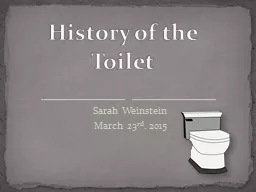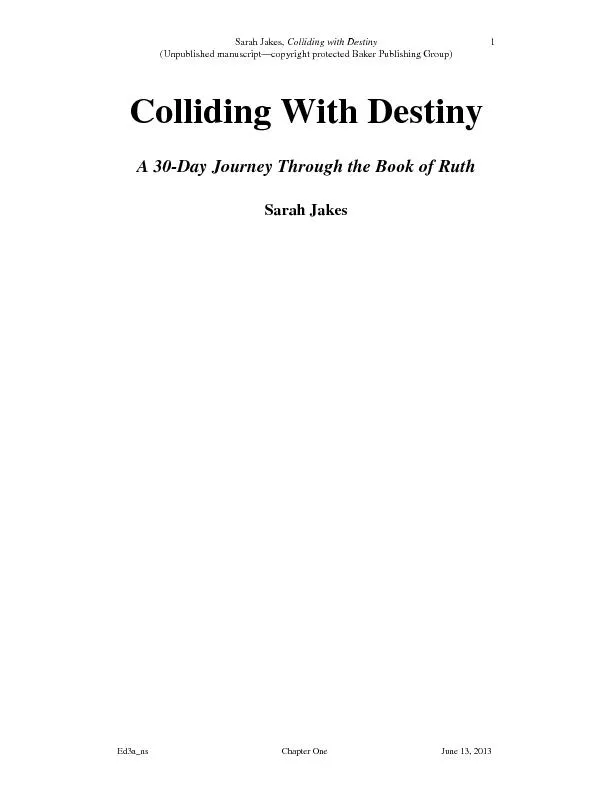PPT-Sarah Weinstein
Author : pamella-moone | Published Date : 2016-07-25
March 23 rd 2015 History of the Toilet About 2500 Bc The Harappan city dwellers of the Indus Valley presentday India and Pakistan build the earliest known indoor
Presentation Embed Code
Download Presentation
Download Presentation The PPT/PDF document "Sarah Weinstein" is the property of its rightful owner. Permission is granted to download and print the materials on this website for personal, non-commercial use only, and to display it on your personal computer provided you do not modify the materials and that you retain all copyright notices contained in the materials. By downloading content from our website, you accept the terms of this agreement.
Sarah Weinstein: Transcript
Download Rules Of Document
"Sarah Weinstein"The content belongs to its owner. You may download and print it for personal use, without modification, and keep all copyright notices. By downloading, you agree to these terms.
Related Documents














